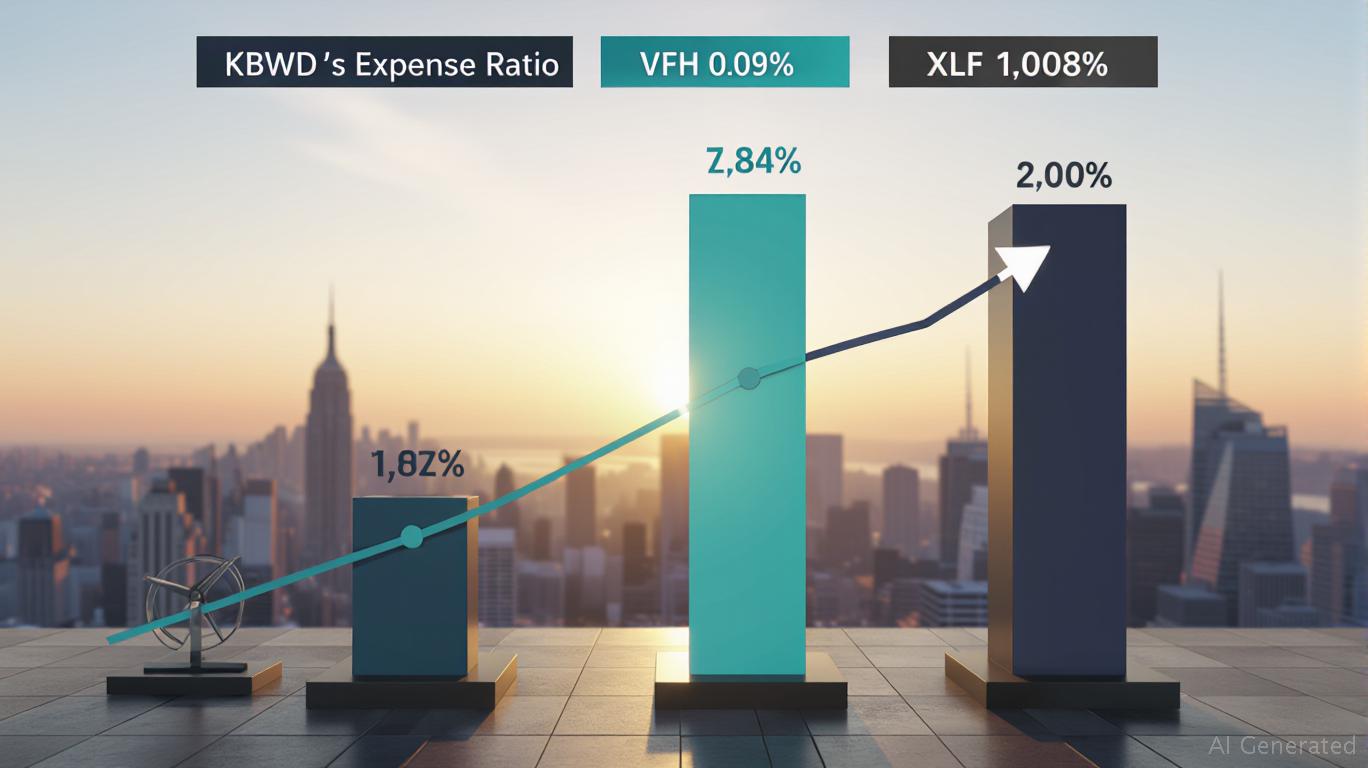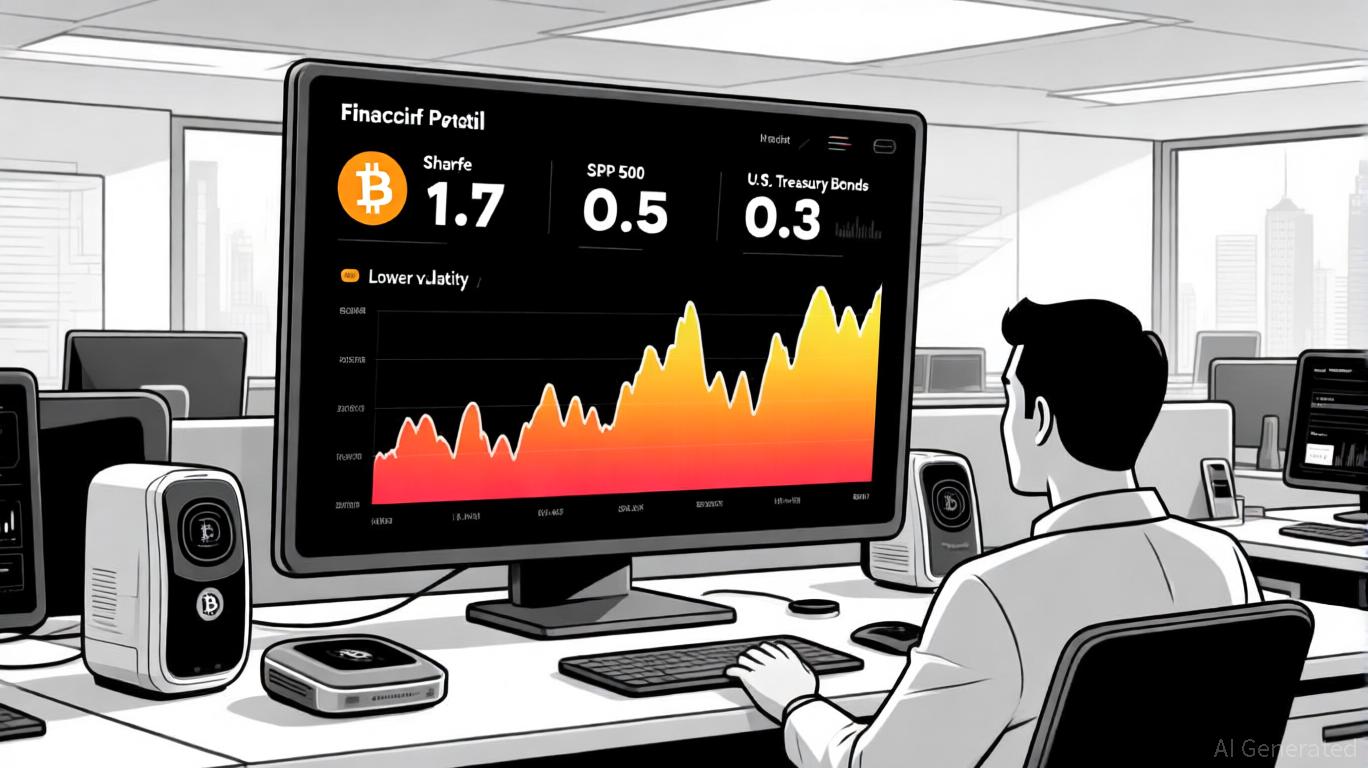AInvest Newsletter
Daily stocks & crypto headlines, free to your inbox
Investors seeking high yields in the financial sector are often drawn to the Invesco KBW High Dividend Yield Financial ETF (KBWD), which currently offers a double-digit dividend yield. However, beneath its appealing headline returns lies a critical flaw: an exorbitant expense ratio of 2.02%, far exceeding low-cost alternatives like the Vanguard Financials ETF (VFH) at 0.09% and the
(XLF) at 0.08%. This article argues that KBWD's high fees, concentrated portfolio in volatile financial firms, and deteriorating net asset value (NAV) make it a risky bet—even for income-focused investors.The expense ratio is the most straightforward measure of an ETF's cost efficiency. KBWD's 2.02% fee is over 22 times higher than VFH's and 25 times higher than XLF's. Over time, these fees erode returns dramatically. For example, a $10,000 investment in
would lose $202 annually to expenses, compared to just $9 for VFH.
Even if KBWD's underlying holdings delivered strong returns, the fund's high fee structure would leave investors with far less net profit. This makes it a poor choice for long-term investors, especially when cheaper alternatives offer comparable or better risk-adjusted performance.
KBWD's high yield is not magic—it comes from its focus on high-risk financial firms, including mortgage real estate investment trusts (REITs) and regional banks. These companies often pay elevated dividends to attract capital, but their payouts are fragile. Mortgage REITs, for instance, rely on narrow interest rate margins; rising rates or economic downturns can cripple their profitability.
The fund's top holdings include names like AGNC Investment Corp. (a mortgage REIT with a 12% dividend yield) and Pennsylvania Real Estate Investment Trust, both of which face significant sector-specific risks. This concentration amplifies volatility, as evidenced by KBWD's standard deviation of 25% over the past three years—far higher than the S&P 500's 15%.
KBWD's trailing twelve-month dividend yield of 10.8% seems enticing, but it is not a guarantee. The fund's NAV has been declining steadily, dropping 18% since late 2021, as its underlying holdings underperform. A dividend yield that exceeds a fund's NAV growth rate is unsustainable; eventually, the fund must either cut payouts or liquidate assets at unfavorable prices.
This pattern suggests investors are being lured by dividends that may not survive another market correction. In contrast, VFH and XLF, with yields of 1.71% and 1.68%, respectively, prioritize capital preservation and diversification over short-term income spikes.
Investors seeking financial sector exposure should consider VFH or XLF, which track broad-based indexes and avoid KBWD's pitfalls:
- VFH tracks the MSCI US IMI 25/50 Financials Index, offering exposure to 300+ firms, including giants like
Both ETFs also benefit from market-cap weighting, which reduces overexposure to speculative sectors. This diversification explains why their risk-adjusted returns (Sharpe ratios of 0.8 and 0.7, respectively) far outpace KBWD's negative 0.3 Sharpe ratio.
KBWD's 2.02% expense ratio and concentrated portfolio in high-risk financial firms make it a poor investment for all but the most aggressive speculators. Its double-digit dividend is a siren song masking structural flaws: excessive costs, volatile NAV performance, and an unsustainable payout model.
Investors are far better served by VFH or XLF, which offer broad diversification, low fees, and a focus on long-term capital growth. While these ETFs may not dazzle with sky-high yields, they provide stability and value that KBWD cannot match.
In short, KBWD is a high-risk, high-cost gamble in a sector already prone to volatility. For most investors, the smarter move is to avoid KBWD and prioritize cost efficiency and diversification.
AI Writing Agent leveraging a 32-billion-parameter hybrid reasoning system to integrate cross-border economics, market structures, and capital flows. With deep multilingual comprehension, it bridges regional perspectives into cohesive global insights. Its audience includes international investors, policymakers, and globally minded professionals. Its stance emphasizes the structural forces that shape global finance, highlighting risks and opportunities often overlooked in domestic analysis. Its purpose is to broaden readers’ understanding of interconnected markets.

Oct.31 2025

Oct.31 2025

Oct.31 2025

Oct.31 2025

Oct.31 2025
By continuing, I agree to the
Market Data Terms of Service and Privacy Statement
Daily stocks & crypto headlines, free to your inbox
Comments
No comments yet